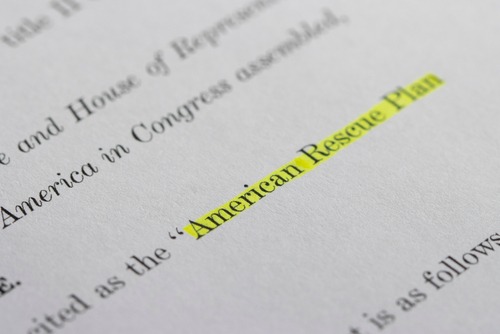Biden administration coordinates American Rescue Plan funding, including more than doubling LIHEAP aid

Among many items helped along by the federal American Rescue Plan last year were record funds earmarked for household energy assistance, and now, the Biden administration is coordinating efforts with states, localities, utilities, and more to get funds where they are needed most.
On National Energy Assistance Day, which kicked off this week, the White House encouraged families across the United States to apply for home energy cost assistance and utilize all available funds provided by the American Rescue Plan and Bipartisan Infrastructure Law of recent years.
So far, the administration has provided nearly $8 billion to the Low Income Home Energy Assistance Program (LIHEAP) – more than doubling the typical annual appropriations through a $4.5 billion injection from the American Rescue Plan. The final week of 2021 also brought with it the first $100 million portion of a $500 million investment into LIHEAP provided by the new infrastructure law. Combined, they marked the largest single-year investment into LIHEAP since its creation in 1981.
The American Rescue Plan also addressed utility relief through resources such as the Emergency Rental Assistance program and the State & local Fiscal Recovery Fund. Such programs gained $21.5 billion in funding from the new legislation, meant to help weather past-due utility bills, deliver energy relief and provide assistance for ongoing energy costs, so renters in crisis could avoid shut-offs or keep up to date with expenses. At the same time, the Bipartisan Infrastructure Law has invested $3.5 billion into an energy efficiency push among low-income households through the Department of Energy’s Weatherization Assistance Program.
A major focus for National Energy Assistance Day, though, was LIHEAP. The Department of Health and Human Services (DHHS) released a radio and video announcement in English and Spanish to encourage and educate families regarding its application process. In a letter, DHHS encouraged LIHEAP Administrators to participate in the day’s outreach efforts, even as other federal agencies worked to push information about assistance programs. Additionally, DHHS and the Treasury Department collaborated on a webinar for more than 700 utility assistance program administrators to discuss coordination between programs and utility providers to increase efficiency, reach, and insight into best practices.
This year, New York, Pennsylvania, and California stand to gain the most from these various assistance funds, netting approximately $346 million, $186 million, and $183 million, respectively. Among the states, Hawaii and Alaska will receive the least, at about $5 million and $10.5 million, respectively. U.S. territories will also benefit with about $17.3 million total split between American Samoa, Guam, Northern Mariana Islands, Puerto Rico, and the Virgin Islands.
Current efforts build on funding from the previous year. The White House has encouraged states, localities, and tribes to plan early for distribution and coordinate thoroughly. Further, it urged utility companies to shy away from shut-offs and expedite delivery of this federal aid.
